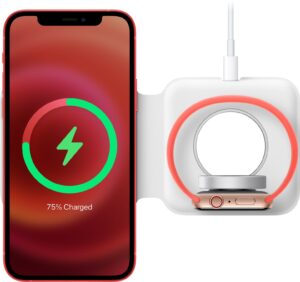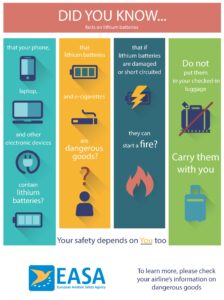Have you ever wondered how far you need to drive to fully charge your battery? If you’re on the lookout for a quick solution, look no further! In this article, we will explore the answer to the question “How far to drive to charge battery” in a conversational and informative manner. Whether you’re driving an electric car or relying on a mobile device, understanding the distance required to recharge your battery is crucial. So, let’s dive right in and find out exactly how far you need to go to charge your battery effectively.
How Far to Drive to Charge Battery: A Comprehensive Guide
Are you a vehicle owner considering the switch to electric? One of the critical factors to consider when investing in an electric vehicle (EV) is understanding how far you need to drive to charge the battery adequately. Charging an electric vehicle is not as simple as filling up with gasoline, and there are several variables to consider.
Factors Affecting the Range of an Electric Vehicle
The range of an electric vehicle can vary depending on various factors. These factors affect how far you can drive before needing to recharge your EV’s battery. Let’s explore these factors in detail:
1. Battery Capacity
The capacity of your EV’s battery pack plays a vital role in determining how far you can drive on a single charge. Electric vehicles come with different battery capacities, with larger batteries generally providing a longer range. However, keep in mind that larger battery packs may also increase the overall weight of the vehicle, impacting its efficiency and range.
2. Driving Conditions
The driving conditions you encounter can influence the range of your electric vehicle. Factors such as traffic congestion, hilly terrain, and extreme weather conditions can impact the efficiency of your EV. For instance, driving at high speeds on the highway or running the air conditioning system extensively can reduce the range. On the other hand, driving in favorable conditions such as moderate temperatures and smooth roads can help maximize your EV’s range.
3. Driving Style
Your driving style can significantly affect the range of your electric vehicle. Aggressive driving habits, such as sudden acceleration and hard braking, can consume more energy and reduce your EV’s range. Conversely, adopting a smooth and steady driving style, anticipating traffic conditions, and practicing regenerative braking can help optimize your vehicle’s range.
4. Vehicle Efficiency
The efficiency of your electric vehicle is another crucial aspect to consider. Not all EV models have the same level of efficiency in converting stored energy to power the wheels. Some electric vehicles are more energy-efficient than others. Researching and choosing an electric vehicle with higher energy efficiency can help you maximize your range.
5. Climate and Temperature
The climate and temperature in which you drive your electric vehicle can impact its range. Extreme temperatures, especially very cold weather, can reduce the efficiency of the battery and limit the range. Running the heating or cooling systems in your EV also draws power from the battery, further affecting the range. It’s essential to consider these factors, especially if you live in an area with extreme weather conditions.
Understanding Electric Vehicle Range Specifications
When researching electric vehicles, you will come across range specifications provided by manufacturers. Understanding these specifications is crucial to determine how far you need to drive to charge your EV’s battery accurately. Let’s delve deeper into the two common range specifications:
1. EPA Range
The Environmental Protection Agency (EPA) in the United States provides a standardized range estimate for electric vehicles. This range is influenced by various factors, including the vehicle’s efficiency, battery capacity, and driving conditions. The EPA range is a reliable reference point that helps consumers compare different electric vehicle models.
2. Real-World Range
The real-world range refers to the actual achievable range of an electric vehicle under typical driving conditions. This range may differ from the EPA range as it takes into account factors such as driving habits, climate, and terrain. Real-world ranges are often shared by EV owners and can provide valuable insights into how far you can drive on a single charge.
Calculating How Far to Drive to Charge the Battery
Now that you understand the various factors and range specifications let’s explore how to calculate how far you need to drive to charge your electric vehicle’s battery:
1. Determine the Battery Capacity
Start by identifying the battery capacity of your electric vehicle. This information is typically available in the user manual or online resources provided by the manufacturer. The battery capacity is usually expressed in kilowatt-hours (kWh).
2. Find Your Electric Vehicle’s Efficiency
Research and find out the energy efficiency rating (miles per kilowatt-hour or kWh/100 miles) of your electric vehicle model. This rating indicates how many miles your EV can travel per kilowatt-hour of battery capacity.
3. Consider Average Efficiency
While the energy efficiency rating provides a baseline, it’s essential to consider that real-world driving conditions might differ. It is recommended to reduce the efficiency rating by 10-20% to account for factors such as driving style, climate, and terrain. This will provide a more realistic estimate of your EV’s actual range.
4. Calculate the Range
Multiply your electric vehicle’s battery capacity (in kilowatt-hours) by the adjusted energy efficiency rating (in miles per kilowatt-hour). The result will give you an estimated range in miles. This calculation provides you with an approximate range, but keep in mind that actual results may vary based on the factors discussed earlier.
Tips for Maximizing Your Electric Vehicle’s Range
While the range of an electric vehicle is determined by various factors, there are steps you can take to maximize your EV’s range. Here are some tips to help you make the most of your electric vehicle’s battery:
1. Plan Your Routes
Plan your routes in advance to avoid unnecessary detours and optimize your driving efficiency. Make use of available apps or websites that provide information on charging stations along your route to ensure you have access to charging infrastructure when needed.
2. Utilize Regenerative Braking
Regenerative braking is a feature found in most electric vehicles that helps recharge the battery while decelerating or braking. By utilizing regenerative braking and anticipating traffic conditions, you can maximize your EV’s range.
3. Optimize Climate Control
Climate control systems can consume a significant amount of energy from your EV’s battery. To maximize your range, consider using the climate control sparingly or pre-conditioning your vehicle while it is still connected to a charging station.
4. Maintain Optimal Tire Pressure
Properly inflated tires can improve your electric vehicle’s efficiency and, in turn, maximize its range. Regularly check and maintain the recommended tire pressure to ensure optimal performance.
5. Minimize Excessive Weight
Additional weight in your electric vehicle can decrease its range. Minimize excessive weight by removing unnecessary items from your vehicle to maximize efficiency and extend your range.
6. Take Advantage of Off-Peak Charging
Electricity rates may differ based on the time of day. Taking advantage of off-peak charging hours can help you save on electricity costs and ensure faster charging times.
Understanding how far you need to drive to charge your electric vehicle’s battery is essential for planning your journeys and making the most of your electric driving experience. By considering factors such as battery capacity, driving conditions, and vehicle efficiency, you can estimate the range of your EV accurately. Additionally, following tips to maximize your range will help you optimize your driving experience and minimize the need for frequent charging.
Frequently Asked Questions
How far do I need to drive to charge my battery?
The distance you need to drive in order to charge your battery depends on several factors, including the type of battery you have, its current charge level, and the charging system of your vehicle. However, in general, driving around 30 minutes or 20-30 miles should provide a decent charge to your battery.
Can I charge my battery by idling the car?
While idling your car can help maintain the charge of your battery to some extent, it is not an efficient method for fully charging the battery. It is recommended to drive your vehicle for a certain distance to allow the alternator to charge the battery effectively.
Do I need to drive on the highway to charge my battery?
No, driving on the highway is not necessary to charge your battery. What matters more is the duration of the drive rather than the type of road. As long as you drive for a sufficient amount of time, your battery should receive a decent charge regardless of the road type.
Is it better to take short trips or a long drive to charge the battery?
It is generally more beneficial to take longer drives to charge your battery. When you drive for longer periods of time, the alternator has more opportunity to fully charge the battery. Short trips may not provide enough time for the battery to charge efficiently.
How often should I drive to charge my battery?
It is recommended to drive your vehicle regularly, especially if it is not used frequently. Driving for at least 20-30 minutes once a week can help keep your battery charged and prevent it from draining excessively.
Can I charge my battery by using a battery charger instead of driving?
Yes, using a battery charger is an effective way to charge your battery without having to drive your vehicle. A battery charger supplies a controlled electric current to the battery, which allows for efficient charging. However, it is important to follow the instructions provided with the charger to ensure safe and proper usage.
Final Thoughts
To determine how far you need to drive to charge your battery, it’s essential to consider the range of your electric vehicle (EV) and the charging speed. The range indicates the distance your EV can travel on a full charge, while the charging speed determines how quickly the battery replenishes. Driving to charge your battery is most efficient during short trips where you can return home to charge. However, if you’re on a long journey, plan your route carefully and utilize public charging stations strategically, ensuring you have enough charge to reach your destination. Understanding the range and charging speed of your EV will help you determine how far to drive to charge your battery effectively.


